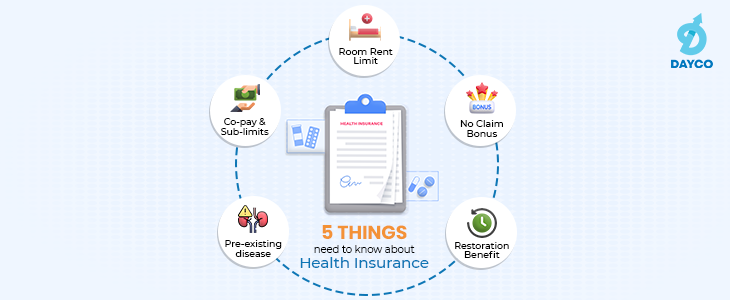Welcome back! We’re thrilled to present the third installment in our series of blogs delving into the captivating realm of fundamental analysis and financial ratios. If you’ve been following along, you’re already well-versed in the art of assessing a company’s valuation and profitability. Now, it’s time to unveil the next layer of insights as we embark on a journey to gauge the financial strength of companies.
In this blog, we’ll equip you with the knowledge and tools needed to dissect a company’s financial health. Just as a physician examines various vital signs to determine the well-being of a patient, we will rely on an array of financial ratios to diagnose the fiscal health of a company. From liquidity ratios that assess a company’s short-term solvency to leverage ratios that reveal its capital structure, we’ll equip you with the ability to differentiate between a company that’s sailing smoothly and one that’s facing turbulent financial waters.
Four Important Financial Ratio Analysis
Current Ratio
What is Current Ratio?
The current ratio is used to assess a company’s short-term liquidity and its ability to meet its short-term obligations using its short-term assets. It’s calculated by dividing a company’s current assets by its current liabilities. Current assets typically include cash, accounts receivable, inventory, and other assets that are expected to be converted into cash within a year. Current liabilities include obligations such as accounts payable, short-term debt, and other liabilities due within a year.
How to use Current Ratio?
You can use the ratio to gauge a company’s short-term financial health and its capacity to cover its short-term debts. A higher current ratio generally indicates a stronger liquidity position, implying that the company is better positioned to pay off its obligations. A lower current ratio, on the other hand, might indicate potential difficulties in meeting immediate financial commitments.
A good current ratio depends on the industry and the specific circumstances of the company. Generally, a current ratio above 1 is considered healthy, as it suggests the company has more current assets than current liabilities. However, an excessively high current ratio might indicate inefficient use of resources, as it could imply that the company is holding too much cash or other non-productive assets.
Quick Ratio
What is Quick Ratio?
The quick ratio, also known as the acid-test ratio, is a more stringent measure of a company’s liquidity than the current ratio. It focuses on a company’s ability to pay off its short-term liabilities using its most liquid assets, excluding inventory from the equation. The quick ratio considers only assets that can be quickly converted into cash, such as cash itself, marketable securities, and accounts receivable.
How to use Quick Ratio?
The quick ratio is a more refined indicator of a company’s ability to meet its immediate financial obligations without relying on inventory sales. It provides insight into whether a company can cover its short-term liabilities using its most liquid assets. Comparing the quick ratio with the current ratio can give a clearer picture of a company’s liquidity position and its potential to handle unexpected financial challenges. As the quick ratio considers only the most liquid assets, it can be particularly important in industries where inventory turnover is slow or where inventory values might be subject to significant fluctuations.
Debt Equity Ratio
What is Debt-to-Equity Ratio?
The debt-to-equity ratio is used to assess a company’s capital structure and financial leverage. It measures the proportion of a company’s total debt to its total equity. This ratio provides insights into how a company finances its operations, indicating the extent to which it relies on debt financing compared to equity financing.
What is the formula of the debt equity ratio?
Here you go –
Debt to Equity Ratio = Total Debt / Total Equity
How to Use Debt to Equity Ratio?
The debt-to-equity ratio can help you evaluate a company’s risk exposure related to its debt obligations. A high debt-to-equity ratio might indicate that a significant portion of the company’s operations is financed by debt, which can enhance returns in good times but increase vulnerability during economic downturns. A lower debt-to-equity ratio suggests that the company relies more on equity financing, potentially indicating a more conservative financial structure.
Things to keep in mind:
Debt-to-equity does not consider the nature of the debt (short-term vs. long-term, fixed vs. variable interest rates, etc.) or the company’s ability to manage its debt payments. Remember that debt can be taken on for specific projects or acquisitions that can enhance future earnings. A high debt-to-equity ratio might not be a concern if it’s associated with value-creating initiatives.
Interest Coverage
What is Interest Coverage Ratio?
The interest coverage ratio helps you assess a company’s ability to meet its interest obligations on its outstanding debt. It measures the company’s ability to generate enough operating income to cover its interest expenses. This ratio is crucial for understanding how well a company can manage its debt burden and whether it has sufficient earnings to service its interest payments.
Interest Coverage Ratio Formula:
Interest Coverage Ratio = Earnings Before Interest and Taxes (EBIT) / Interest Expenses
How to Use Interest Coverage Ratio?
The interest coverage ratio can help you uncover a company’s ability to handle its debt obligations. A higher interest coverage ratio indicates that the company is generating ample earnings to cover its interest payments, suggesting a lower risk of default. A lower interest coverage ratio, on the other hand, could raise concerns about the company’s ability to service its debt and might imply higher financial risk.
Things to keep in mind:
Remember that the ratio only considers interest payments and does not account for principal repayments or other financial obligations. A company might have low-interest expenses but face a significant repayment of principal in the near future. In addition, the ratio might fluctuate based on the volatility of a company’s earnings. A temporary decline in earnings could lead to a lower ratio, even if the company’s overall financial health is sound. As with any other financial ratios, check the trend of interest coverage over the years and compare it with similar companies to frame a benchmark and draw a conclusion.
That brings us to the end of our blog on assessing the financial strength of a company. In addition to using all the above ratios, you must also get your hands on recently published credit reports on companies to hone your analysis.
We appreciate your participation in this enlightening trip as we delved into the realm of financial ratios and their crucial role in assessing investment prospects. Through this series of blog posts, our aim has been to illuminate the value of financial ratios in gauging a company’s profitability, valuation, financial robustness, and potential as an investment avenue. We hope that this blog series has been a tremendous help to you.
~ Dimensions, Nischay Avichal
















